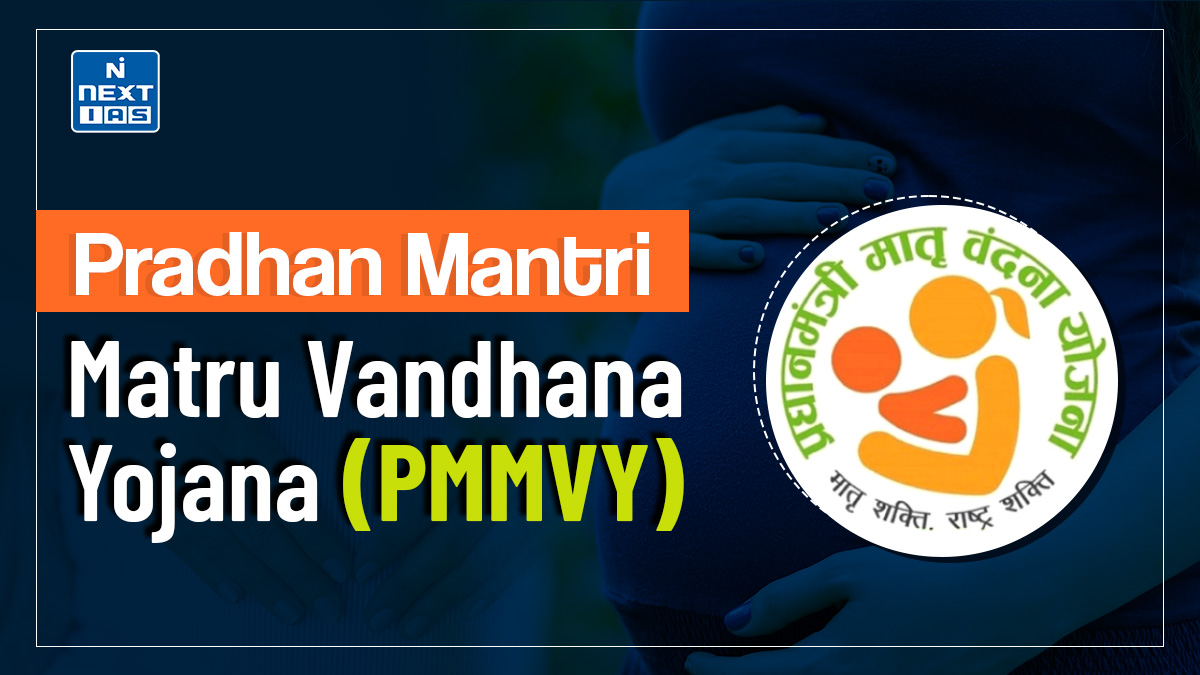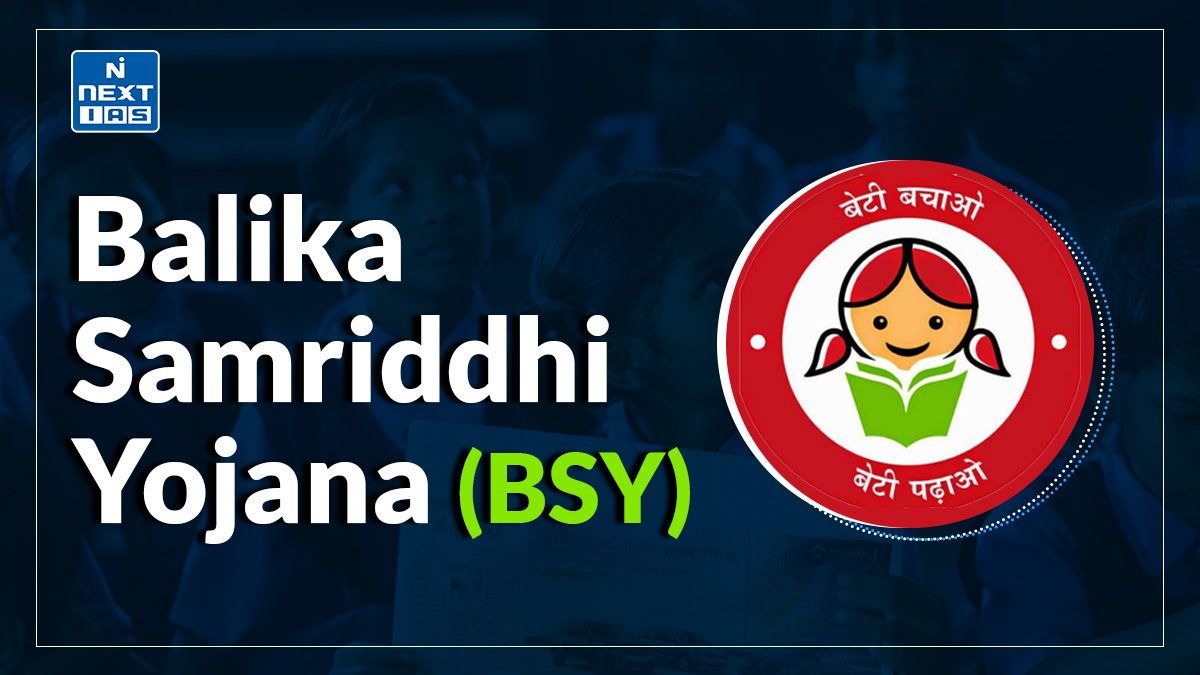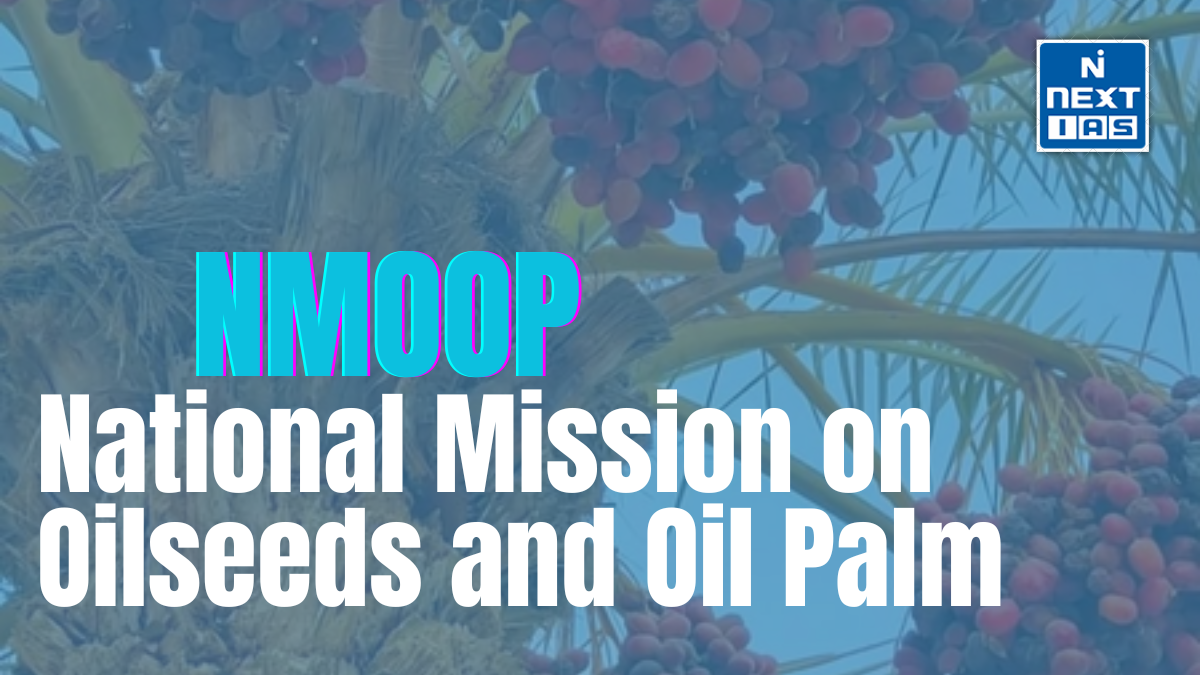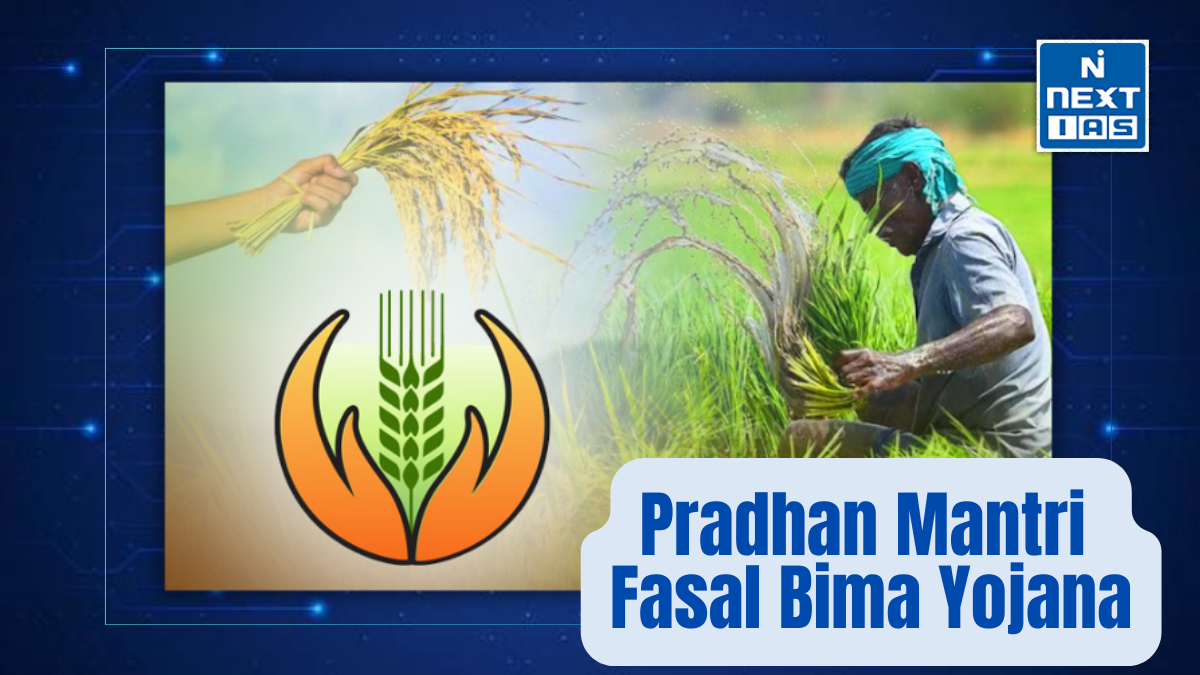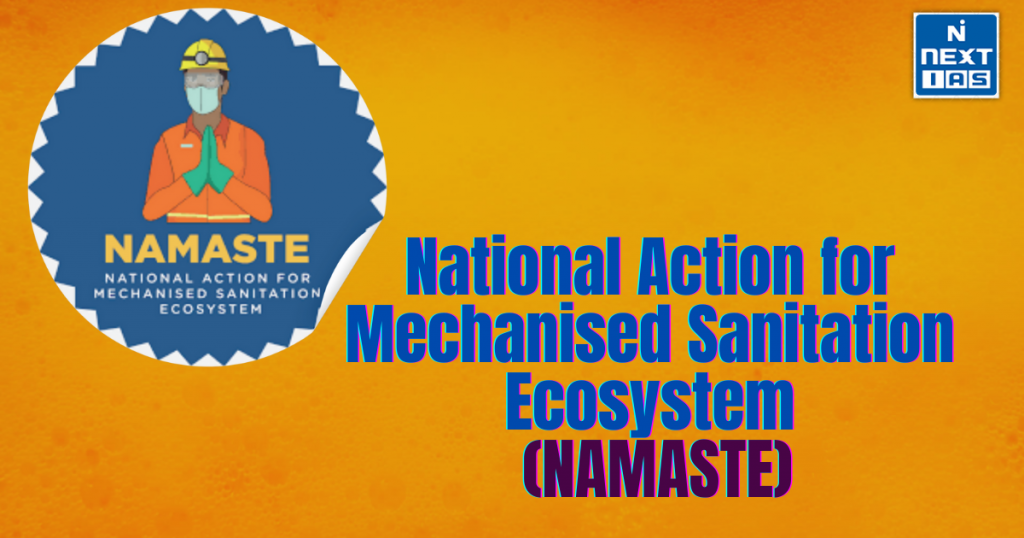
The Ministry of Social Justice and Empowerment in convergence with the Ministry of Housing and Urban Affairs have launched the National Action for Mechanised Sanitation Ecosystem (NAMASTE) scheme in July 2023 to ensure safety and dignity of sanitation workers. The focus is on prevention of hazardous cleaning and promotion of safe cleaning practices through trained and certified sanitation workers. The objective of the scheme is to formalize and rehabilitate the persons engaged in hazardous cleaning of sewer and septic tanks.
About the National Action for Mechanised Sanitation Ecosystem (NAMASTE)
- The intended outcome of NAMASTE scheme is to achieve zero fatalities in sanitation work; elimination of direct contact of sanitation workers with human faecal matter; all cleaning operations to be done through safety devices; all sanitation work to be performed by skilled workers; strengthening and capacitating of Emergency Response Sanitation Units (ERSUs) to ensure safe delivery of mechanized sanitation services and empowerment of sanitation workers through formation of Self-Help Groups and entrepreneurship etc.
- The components includes profiling of Sewer and Septic Tank Workers (SSWs); Health Insurance coverage under AB- PMJAY; Occupational safety training of SSWs; upfront Capital Subsidy for procurement of Sanitation related Vehicles/ Equipments; PPE kits to SSWs; safety devices to ERSUs and IEC Campaign for awareness of safety and dignity of SSWs.
- Waste Pickers engaged in Solid Waste Management have been included as a component under NAMASTE scheme in 2024 with objective to provide safe, dignified and sustainable livelihoods by empowering them through various interventions. Waste pickers will be enumerated and provided training on occupational safety and skill upgradation training; specific to season and need based PPE Kits ; Health Insurance coverage under Ayushman Bharat-PMJAY and upfront Capital subsidy for Waste Collection Vehicles etc.
- Components of erstwhile Self Employment Scheme for Rehabilitation of Manual Scavengers (SRMS) like health insurance under Ayushman Bharat – PMJAY; skill development training and upfront capital subsidy for self employment projects have been subsumed in NAMASTE scheme.
Features of the National Action for Mechanised Sanitation Ecosystem (NAMASTE)
- Mechanization of Sewer and Septic Tank Cleaning – Promotes the use of advanced equipment and technology to replace manual cleaning of sewers and septic tanks, ensuring worker safety.
- Identification and Rehabilitation of Workers – Identifies manual scavengers and sanitation workers, providing them with alternative livelihood opportunities and skill development.
- Skill Development and Training – Empowers sanitation workers through specialized training programs in mechanized cleaning techniques, ensuring better employment prospects.
- Financial Support and Loans – Facilitates financial assistance, including loans and subsidies, for sanitation workers to help them transition to mechanized sanitation work or alternative businesses.
- Health and Insurance Benefits – Ensures sanitation workers have access to health services, including medical insurance, to safeguard their well-being.
- Monitoring and Accountability – Implements a robust monitoring mechanism to track progress and ensure strict enforcement of mechanized sanitation practices.
- Awareness and Social Upliftment – Conducts awareness campaigns to promote the dignity and rights of sanitation workers while eliminating discriminatory practices.
Objectives of the National Action for Mechanised Sanitation Ecosystem (NAMASTE)
- Eradication of Manual Scavenging – The program seeks to completely eliminate manual scavenging by promoting mechanized cleaning of sewer and septic tanks, ensuring that no worker is exposed to hazardous conditions.
- Occupational Safety and Health – NAMASTE focuses on providing sanitation workers with protective gear, modern equipment, and training to handle mechanized cleaning systems, thereby minimizing health risks.
- Skill Development and Capacity Building – The scheme offers skill training and certification programs to help sanitation workers transition to safer and alternative employment opportunities, improving their livelihoods.
- Access to Social Security Benefits – It integrates workers into government welfare schemes such as health insurance, life insurance, and pension programs to enhance their financial security.
- Livelihood Enhancement – The program facilitates financial and technical support for sanitation workers to start their own businesses or seek alternative livelihoods, promoting economic self-sufficiency.
- Institutional Strengthening – NAMASTE ensures better coordination among urban local bodies, government agencies, and stakeholders to implement mechanized sanitation solutions effectively.
- Awareness and Behavioral Change – It promotes awareness campaigns to highlight the risks of manual scavenging and encourages public and private entities to adopt mechanized sanitation practices.
Significance of the National Action for Mechanised Sanitation Ecosystem (NAMASTE)
- Eradication of Manual Scavenging:
- NAMASTE focuses on completely eliminating the unsafe practice of manual cleaning of sewers and septic tanks by replacing it with mechanized sanitation techniques.
- Ensuring Worker Safety & Dignity:
- The initiative provides training, protective equipment, and advanced technology to sanitation workers to prevent life-threatening risks associated with manual scavenging.
- Skill Development & Employment Opportunities:
- The program offers capacity-building workshops and skill enhancement training to sanitation workers, enabling them to transition into safer and more sustainable job roles.
- Financial & Social Security:
- NAMASTE promotes financial inclusion by providing access to loans, insurance schemes, and other welfare benefits, improving the socio-economic status of sanitation workers.
- Urban Sanitation Improvement:
- By encouraging the adoption of modern equipment like jetting machines and robotic sewer cleaners, the initiative enhances the efficiency and hygiene of urban sanitation services.
- Holistic Approach:
- The program integrates municipalities, private sector players, and government agencies to build a robust ecosystem for mechanized sanitation.
Lacunae of the National Action for Mechanised Sanitation Ecosystem (NAMASTE)
- Limited Implementation and Awareness – The scheme lacks widespread implementation across all states, and awareness campaigns have been insufficient to ensure participation from all stakeholders, including urban local bodies and sanitation workers.
- Inadequate Funding and Resource Allocation – While the program envisions providing mechanized equipment, financial constraints and uneven resource distribution make procurement and maintenance of machines challenging, particularly in smaller municipalities and rural areas.
- Absence of Strong Legal Enforcement – The Prohibition of Employment as Manual Scavengers and Their Rehabilitation Act, 2013, bans manual scavenging, yet enforcement remains weak. Many local bodies continue to employ manual scavengers due to loopholes and lack of strict monitoring.
- Limited Focus on Worker Welfare – The program primarily emphasizes mechanization but falls short in ensuring sustainable rehabilitation, alternative employment, skill training, and social security measures for workers previously engaged in manual scavenging.
- Urban-Centric Approach – While NAMASTE is designed for 500 AMRUT cities, it neglects sanitation workers in peri-urban and rural areas, where manual scavenging remains prevalent.
- Data Deficiency and Accountability Issues – The lack of accurate data on sanitation worker employment and unsafe practices makes it difficult to track progress and hold authorities accountable.
Key Pointers of the National Action for Mechanised Sanitation Ecosystem (NAMASTE)
Implementing Ministries
- Ministry of Social Justice and Empowerment (MoSJE)
- Ministry of Housing and Urban Affairs (MoHUA)
Key Features
- Identification & Rehabilitation: Survey of manual scavengers, skill training, and livelihood support.
- Safety Standards: Use of mechanized equipment, PPEs, and health insurance.
- Capacity Building: Training for sanitation workers in mechanized cleaning.
- Financial Support: Loans and subsidies for purchasing mechanized cleaning equipment.
- Monitoring & Accountability: Establishment of a national portal to track sanitation workers’ welfare.
Target Cities
- Initially implemented in 500 cities (those with AMRUT coverage).
Funding & Assistance
- Central Sector Scheme (100% funded by the Government of India).
- Credit-linked subsidies for sanitation workers.
Related Initiatives
- Swachh Bharat Mission (SBM-U 2.0): Focuses on mechanized sanitation.
- Prohibition of Employment as Manual Scavengers and their Rehabilitation Act, 2013: Bans manual scavenging.
- Safaimitra Suraksha Challenge: Ensures mechanized cleaning in cities.
Way Forward
The way forward for NAMASTE includes expanding mechanized sanitation coverage, strengthening worker safety, integrating advanced technologies, and enhancing capacity-building programs. Policy enforcement, financial incentives, and public-private partnerships will drive sustainability. Community awareness and digital monitoring will ensure efficiency, dignity, and hygiene, promoting a cleaner, safer sanitation ecosystem nationwide.
Conclusion
The National Action for Mechanised Sanitation Ecosystem (NAMASTE) aims to eliminate manual scavenging by promoting mechanized cleaning, ensuring worker safety, and providing skill development. It fosters dignity, financial security, and alternative livelihoods for sanitation workers, creating a sustainable, technology-driven ecosystem for sanitation management, aligned with India’s commitment to social justice and public health.
